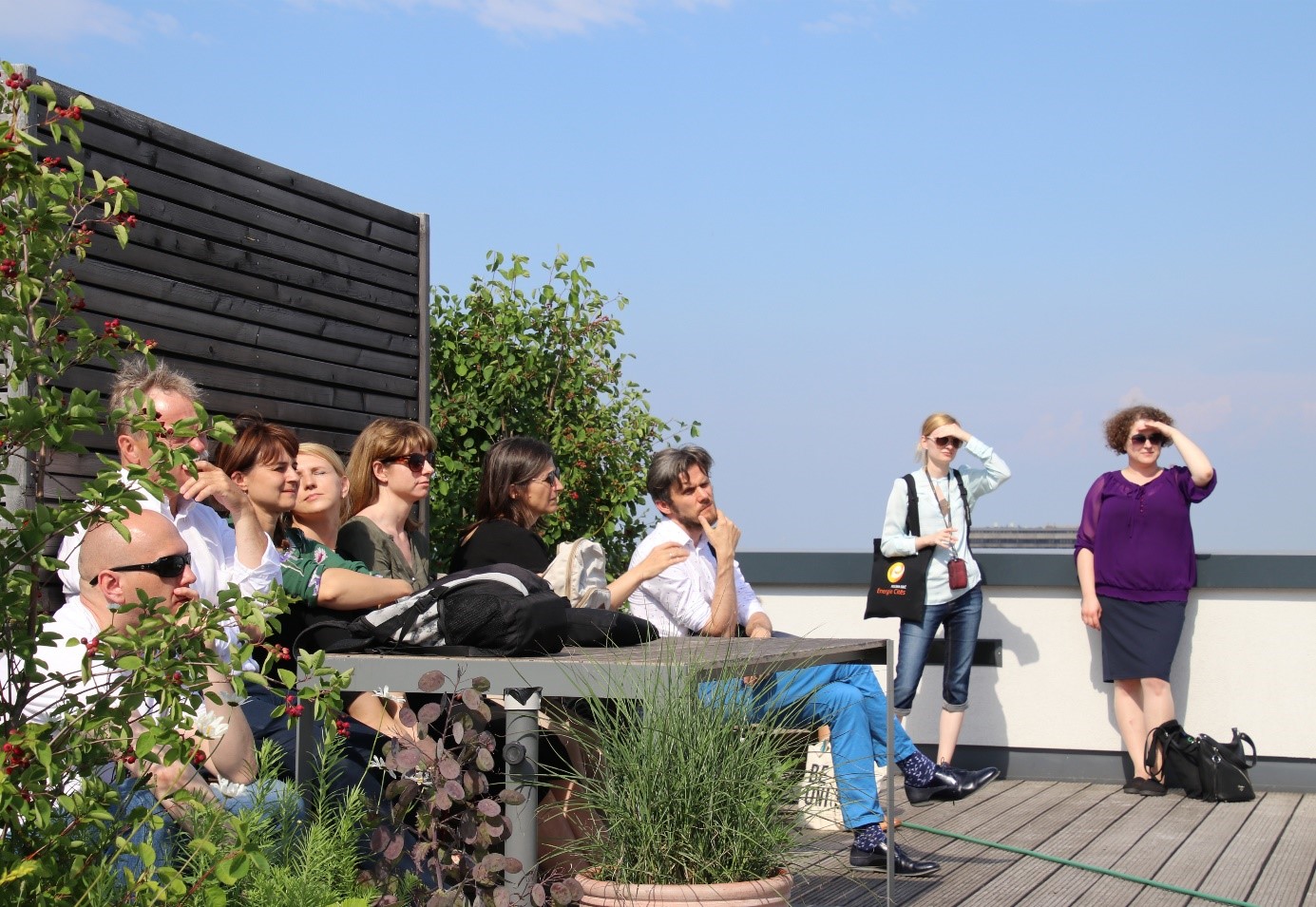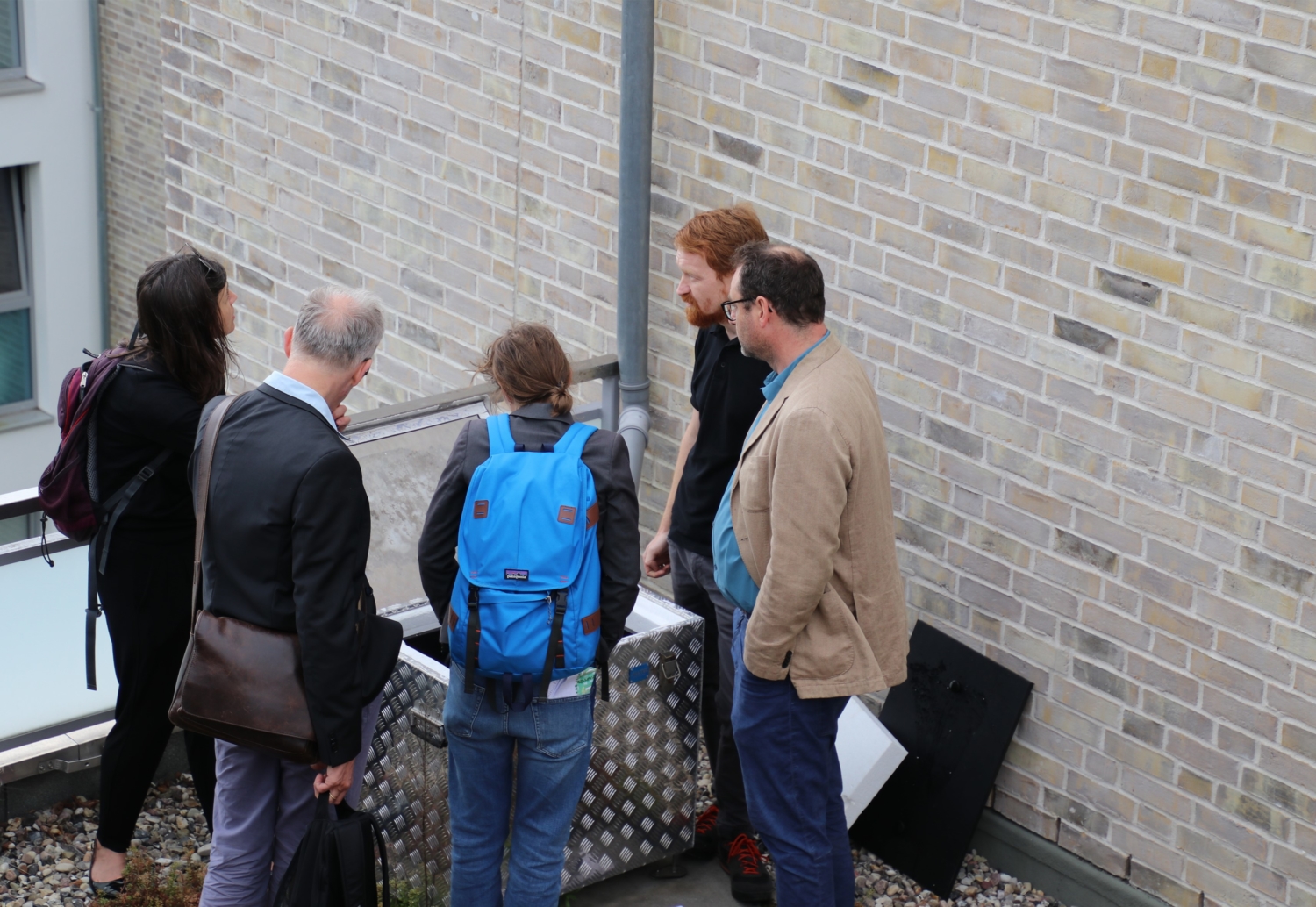A Journey across the Green Roofs of Hamburg
The EUKI project ‘GRAD: Green Roofs as a Tool for Climate Adaptation in Urban Areas‘ fosters the exchange of information between representatives from Hamburg and eight cities in Poland. In early June, 18 representatives from the participating Polish cities travelled to Hamburg for a three-day trip to explore Hamburg’s green roofs and rainwater management projects.

The visitors travelled to the Hanseatic city from Warsaw, Kraków, Wrocław, Poznań, Gdańsk, Szczecin and smaller communities and met with experts from Hamburg. The trip provided an opportunity for representatives from a variety of fields such as city planning and parks authorities, waste disposal, energy, climate and administration to share their knowledge and experience.
Promotion, Dialogue and Regulation
It began with an introduction to Hamburg’s Green Roof Strategy and a closer look at the expansive green roof of the Ministry of Environment and Energy in Wilhelmsburg neighbourhood. Dr Hanna Bornholdt from the Ministry stressed the importance of having a multifaceted strategy involving numerous approaches – promotion, dialogue and regulation. She placed particular emphasis on the need for cooperation across all government agencies and departments. The trip showed how green roofs can provide additional habitats for animals and plants. Sven Baumung, from the Department for Nature Conservation, told the visitors about the wild bird species nesting and raising their young on the roofs of Hamburg. The Ministry’s roof is home to common and herring gulls as well as other species such as oystercatchers and wagtails. Dr Michael Marret-Fossen of the Association for Gardens, Landscapes and Sports Fields talked about the plants that can be found on the asspciation’s green roof in Bahrenfeld, including chives and various types of herbs, grass and stonecrop.

One example of the diversity of greening approaches was the rooftop garden of the Ecumenical Forum. It gave participants an up-close look at some of the elements promoted by the Hamburg Green Roof Strategy, for example using green roofs as an open space and combining photovoltaic and solar thermal energy. The city has established an urban funding programme with over €3 million to support the construction of green roofs and energy combinations, explained Anja Bartsch from the Hamburgische Investitions- und Förderbank (IFB), the city’s central development institution. A tour of the new HafenCity neighbourhood provided many examples of extensive rooftop greening and a wide variety of roof uses in high-quality residential buildings.
Role in Rainwater Management
In addition to offering a habitat for flora and fauna and recreational space for humans, green roofs play a significant role in climate change adaptation measures involving rainwater management. Hamburg has developed its own Rain InfraStructure Adaption (RISA) Strategy for this purpose. Michael Richter from HafenCity University Hamburg presented a research project that demonstrated the advantages of retention roofs. The project measures current rainwater retention and evaporation values on the roofs of several buildings in the Am Weißenberge development constructed by the SAGA housing association. Wegenkamp school and Sodenkamp residential area were also mentioned as examples of other RISA rainwater management measures: surface rainwater guidance systems, collection trenches and underground infiltration ditches, unsealed surfaces that allow seepage, façade greenery and the placement of rainwater trenches near trees.

Thanks to the successful trip and lively discussions, both the Polish and the German participants gained new insights into urban climate change adaptation and mitigation strategies, interdisciplinary planning processes and the challenges involved in implementing these measures. In the next step, the Polish partners plan to develop their own strategies for green roofs and to benefit from their recent experience. The landscape architect Izabela Malachowska-Coqui will support the process.
